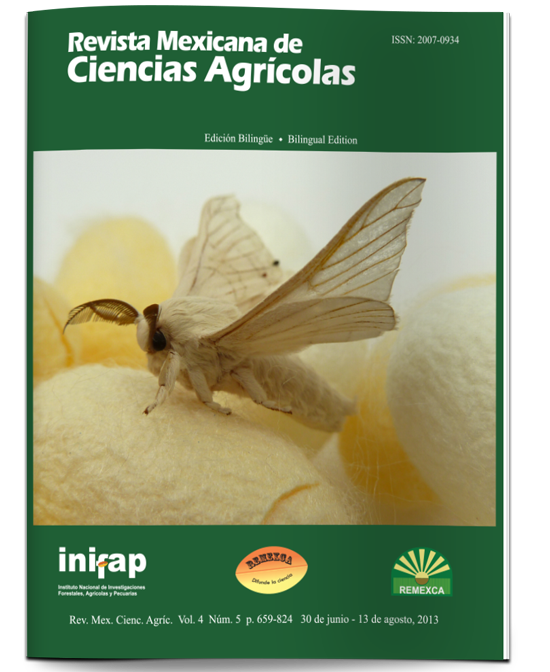Hybrid corn H-565, a new version of H-507 for the tropical lowlands of Mexico
DOI:
https://doi.org/10.29312/remexca.v4i5.1181Keywords:
Zea mays L., Mexican corn hybrid, trilinear hybridAbstract
A major accomplishment for increasing corn production in the tropical lowlands of Mexico and other similar warm- climate regions is the generation of new hybrids. One the materials generated for this region by INIFAP which has shown a successful adaptation to the Tropics of Mexico and Central America, with excellent grain yields and which is currently being used for commercial plantings is the corn hybrid H-507; however, it has some characteristics that do not favor the expression of its maximum potential yield.After ten years of convergent improvement, multiple versions of the T12 line were obtained in 2005; they were recombined to form a population from which new lines were derived, including the T12 RC93 line, which was registered as T48. Moreover, the T11 line was selected per se towards lower plants and cobs, and after the improvement process the improved T11 line was obtained, registered as T47.The single cross of these two lines (T48x T47) generated a hybrid of intermediate size which was crossed with several elite lines, the best cross being a trilinear one (T48 x T47) x LT154. This produced the hybrid H-565, formed with the improved T11 and T12 lines, so that 50% of its germplasm is from the H-507. Thus, corn producers in the tropical lowlands of Mexico are now offered the improved hybrid H-507 (H-565) with better agronomic characteristics and with the same adaptive capability to the tropics.
Downloads
Downloads
Published
How to Cite
Issue
Section
License
The authors who publish in Revista Mexicana de Ciencias Agrícolas accept the following conditions:
In accordance with copyright laws, Revista Mexicana de Ciencias Agrícolas recognizes and respects the authors’ moral right and ownership of property rights which will be transferred to the journal for dissemination in open access. Invariably, all the authors have to sign a letter of transfer of property rights and of originality of the article to Instituto Nacional de Investigaciones Forestales, Agrícolas y Pecuarias (INIFAP) [National Institute of Forestry, Agricultural and Livestock Research]. The author(s) must pay a fee for the reception of articles before proceeding to editorial review.
All the texts published by Revista Mexicana de Ciencias Agrícolas —with no exception— are distributed under a Creative Commons License Attribution-NonCommercial 4.0 International (CC BY-NC 4.0), which allows third parties to use the publication as long as the work’s authorship and its first publication in this journal are mentioned.
The author(s) can enter into independent and additional contractual agreements for the nonexclusive distribution of the version of the article published in Revista Mexicana de Ciencias Agrícolas (for example include it into an institutional repository or publish it in a book) as long as it is clearly and explicitly indicated that the work was published for the first time in Revista Mexicana de Ciencias Agrícolas.
For all the above, the authors shall send the Letter-transfer of Property Rights for the first publication duly filled in and signed by the author(s). This form must be sent as a PDF file to: revista_atm@yahoo.com.mx; cienciasagricola@inifap.gob.mx; remexca2017@gmail.
This work is licensed under a Creative Commons Attribution-Noncommercial 4.0 International license.



